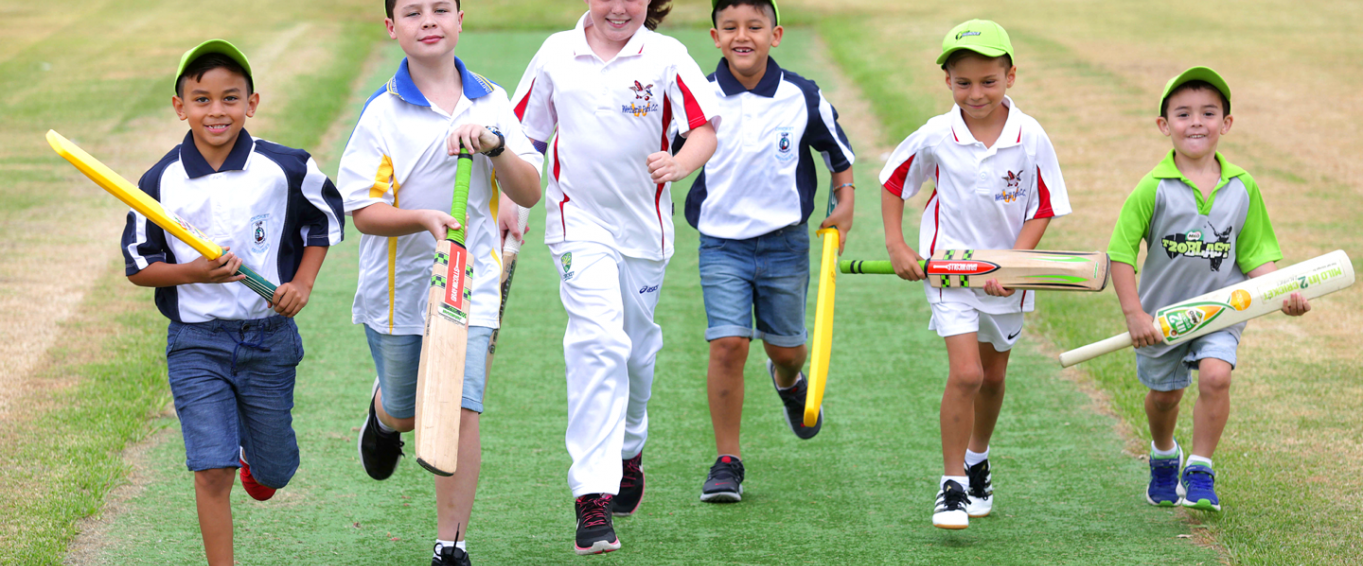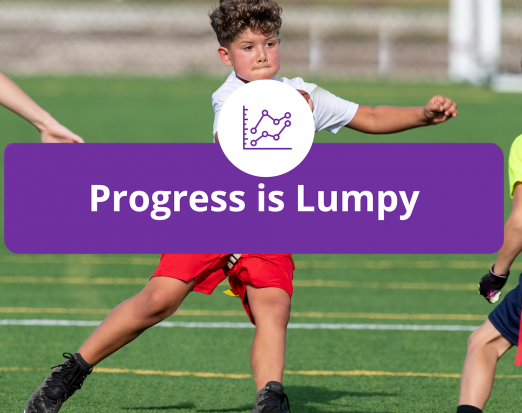7 'Bat & Ball' Games to Play with Kids Who Are New to Cricket

After a nailbiting showdown between England and New Zealand, the 2019 Cricket World Cup brought cricket back into the spotlight. Suddenly, everybody wants to tear around a pitch like Virhat Kohli and hammer a ball as far and wide as Ben Stokes. Cricket - a sport dating all the way back to the 16th century - is cool! So, why aren't we playing it in schools?
Eight million people watched the World Cup final in July 2019. Yet, sports charities are keen to remind us cricket is vanishing from state schools and becoming the preserve of middle and upper class communities. They urge clubs, schools and counties to invest in the future of the game by inspiring children to play.
Cricket is more than just a great use of green fields and long summer afternoons. It helps children develop essential fine motor skills, improve endurance and stamina, increase balance and coordination and learn how to communicate quickly and clearly. There are many different versions of the game so children of all ages and abilities can find an active role to enjoy.
Here are some simple 'bat and ball' activities PE teachers can use to introduce younger pupils to cricket style gameplay:
1. French Cricket
What You Need: cricket bat, softball
How to Play: There are many variations of this game but they all require children to form a circle with a single batsman in the middle. The player in the centre must use the bat to protect their legs as the other children try to 'tag' this area with the softball. The batsman is 'out' if they get hit below the knees or a fielding player catches the softball after they have returned it with their bat.
The batsman is only out if the softball gets caught before it touches the ground (no bounces allowed). The teacher can decide whether the outed batsman swaps with the fielder who beat them or the pupils take turns being in the centre.
Progression: Teachers can make French cricket as easy or as challenging as they like. For instance, most versions of the game require the batsman to be restricted in some way. They must stand on the spot or even with their feet together at all times during play. Similarly, you can ask fielders to take a step away from the batsman each time they safely clear the ball.
2. Roll, Roll, Roll Your Ball
What You Need: cricket bats, tennis ball
How to Play: This fast paced activity is more of a drill than a game but it's a fun way to get pupils moving and handling the ball. If you've got multiple cricket bats, you can play this in small groups. One batsman (in each group) stands with their legs apart, holding the bat in the middle. The other players are bowlers attempting to roll the tennis ball between the batsman's legs. The batsman must use their object manipulation skills to obstruct and return the ball without being outed.
3. Bowl, Bat and Catch
What You Need: cricket bat, softball
How to Play: This simple drill is a low pressure way to introduce younger pupils to basic bowling, batting and catching skills. In groups of six, four children act as fielders, one serves as the bowler and the remaining child is the batsman. The fielders stand in a semi circle around the batsman (start close and move further back to make the game more challenging).
The bowler can stand wherever they like as long as they're not too close to the batsman to pitch correctly or obstructing any of the fielders. The goal is for the batsman to hit the bowler's ball four times, directing each to a specific fielder who must also try to catch it.
Progression: This is a tricky drill for younger children to master so focus on technique and engagement rather than perfection. If you need a more challenging game, have the fielders stand closer away or play with more traditional rules. For instance, instead of batting directly at the fielders, they can try to bat as far as possible and even make a run (1 run = to the bowler and back x 2).
4. Non-stop Cricket
What You Need: cricket bats, tennis balls
How to Play: Also known as continuous cricket, this is a fun (and fast paced) way for children to practise their batting and fielding skills. Each team gets a set amount of time for batting, and the batsman must run whether the ball is hit or not. As soon as the batsman is caught out, the next one quickly takes their place, giving it a much faster pace.
5. Tug o' War
What You Need: football/softball, tennis balls/cricket balls
How to Play: You need a big lightweight ball for this game - a gym style bouncy ball is ideal. If you don't have a large ball, however, you can use a softball and play on a flat surface (rather than grass). Split the class into two teams. They must stand at opposite ends of the field or gymnasium. Place the ball in the centre of the room. While staying in their own area and using nothing but tennis balls, the teams must try to push the centre ball back to their opponent's area.
To ensure safety, all balls must be thrown underarm and not above waist height. Use bouncy tennis balls instead of harder cricket balls.
6. Caterpillar Catch
What You Need: cones, tennis ball
How to Play: This is a classic warm up game that's popular with sports coaches. Divide the class into two teams. Each team must form two parallel lines, with every pupil facing a partner. You can use cones to establish where the children should stop and stand throughout the game. Make sure there's a reasonable catching distance between the parallel lines. The distance between the cones depends on how challenging you want to make the game.
A starting player (can be at either end) throws the tennis ball to their partner on the opposite side. They must then run to the opposite end of their line and rejoin it. This action is repeated, with each pupil catching and throwing the tennis ball in a zig zag to the next player on the opposite line. Make sure pupils run down the OUTSIDE of the line to avoid collisions with the ball. The 'round' is complete when the starting player and their partner have returned to the head of their respective lines.
Progressions: To make the game harder, you can require teams to complete two full caterpillar rounds in order to win. Or for a real challenge, introduce more tennis balls to the game. You also have the option to add a penalty for dropped balls. For example, after every dropped ball, the team might have to wait for 5 seconds before moving again.
7. The Overarm Challenge
What You Need: wicket (or an alternative), cricket balls/tennis balls, cones
How to Play: Set up a wicket (or a similar shaped target) for children to throw at. At intervals, place cones in a line stretching back from the wicket (with the first cone at the shortest distance from the stumps). The aim of the game is simple - throw a ball to hit the wicket. After each successful throw, the player moves further back to the next cone and tries again.
Each pupil should have a limited number of balls (dependent on how many cones you set up). The winner(s) is the pupil who makes the furthest successful throw. The teacher can act as wicket keeper or appoint a pupil.
Are you are interested in other sports or want to become a better athlete?
Our Sports Apps below can help
The Total Football App, is designed to support players of all ages and skill levels. It is the only Football Coaching App that integrates 5 phases of skill acquisition and long-term athletic development, meaning that all sessions and activities are designed to meet your current skill level whether you are just starting out, or are an experienced academy player. All our turning sessions are designed by UEFA Qualified Coaches and are supported by further sessions in:
Ensuring that players aren’t just practicing but are practicing with the highest quality. We also have a range of physical development practices, healthy lifestyle sessions, and psychological tips to help develop the total footballer. If your child needs help developing their turning, or any part of their game, you can try the app for free now!
Stength and Conditioning Platform for Clubs and Academies
Our Total S&C platform helps coaches to deliver a LTAD and S&C programme efficiently to a large number of athletes across all age groups playing different sports.
Our Strength & Conditioning platform consists of a Portal for the coaching team, enabling them to modify training sessions, monitor players training history, input test results and identify players who are sports ready. The athletes are provided their own S&C Player App which allows them to take control of their own training, self-test, log exercise history and track progress.
We get athletes sport ready. We reduce overuse injuries and burn out. We help to develop independent and healthy athletes.
- Automated session generator saves time
- Monitor athlete adherence and progress
- Online management portal for coaches
- Training App for all athletes
- Testing and profiling to identify sport readiness






